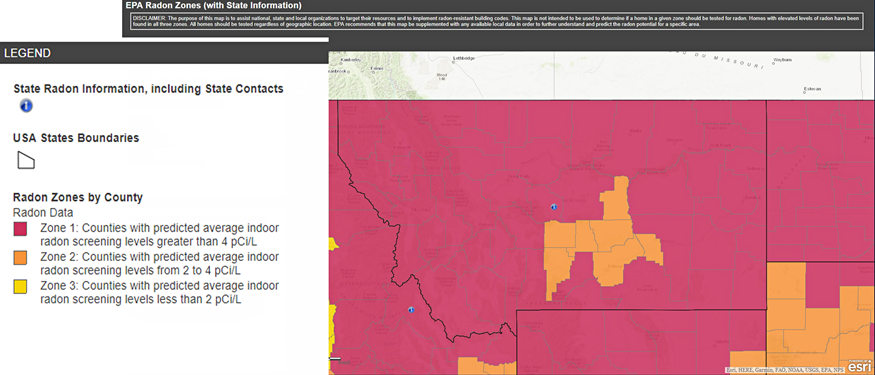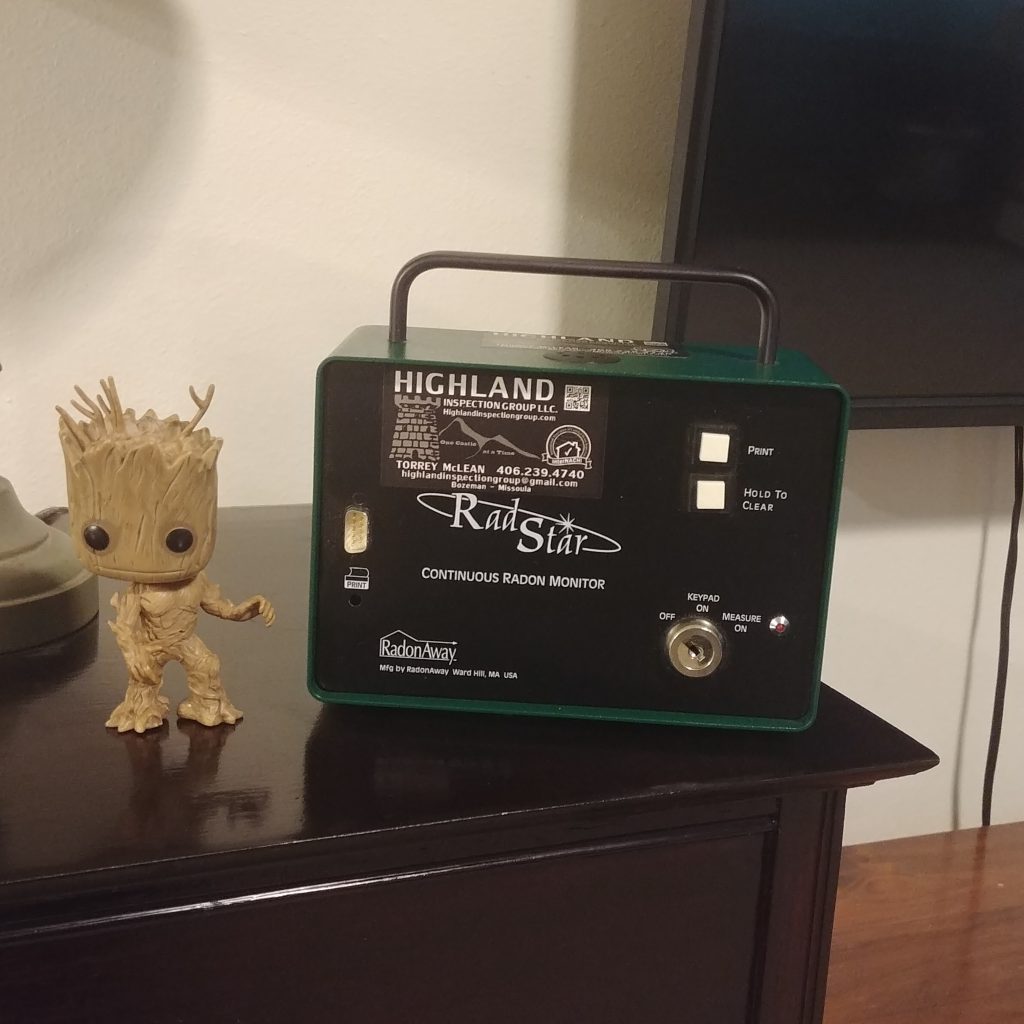Radon Testing our Homes
Radon testing is a good tool to help determine the overall health of a home. Many homes that are tested for radon gas are exceeding the EPA’s benchmark of 4 PiC/L. This means that more homes need some form of mitigation. Here is a quick rundown on radon and how it gets into our homes.
Radon is a naturally occurring radioactive gas and is a byproduct from the breakdown of uranium. It has a half-life of just 3.8 days. Our bodies may be harmed at the cellular level while radon degenerates. This cellular damage may eventually lead to cancer. The EPA and Surgeon General have reported radon gas as the second leading cause of lung cancer in the United States.

Radon Exposure Zones mapped by county. Montana Exposure zones from EPA.gov
How does Radon get into our homes?
Almost every soil type can contain radon. However, radon may permeate easier through gravel beds. It may find its way into homes easier through crawlspaces, foundation cracks and openings, and water sources. Radon gas is odorless, colorless. Therefore, it needs to be monitored and measured with specific equipment. Professional home inspectors have the radon testing equipment needed for accurate radon tests. Higher levels of radon in our homes may have more to do with how we’re building homes now.
In Montana, most homes are either a full basement or a crawlspace. Many homes with a crawlspace have been built with air vents that allow air exchange with outdoor air. Vents can be a good way to manage crawlspace humidity and temperature when used correctly. Exterior vents may also allow radon to escape and keep it from building up in the crawlspace. However, other issues with vents may include moisture or pest intrusion, or heat loss.
Building Standards May Impact Radon Levels
In recent decades, energy departments and building industries are designing homes that are more energy efficient. Building codes at state, county and city levels are either advising or requiring conditioned crawlspaces for newly constructed homes. The idea is to minimize the heat loss/gain from the crawlspaces and keep them dry.
A conditioned crawlspace has a vapor barrier. Sealed vapor barriers help reduce radon gas and humidity from entering the crawlspace. Appropriate insulation around the perimeter of the crawlspace helps with energy efficiency. An installed heat source will equalize the temperature with the main living space.
Unfortunately, there isn’t really a cost effective way to stop radon from entering into a crawlspace or basement. With conditioned crawlspaces not utilizing vents, there isn’t a passive way for radon to escape to the exterior.
With sealed, more energy efficient crawlspaces, radon can built up to higher than acceptable levels. This may cause radon to over flow into the living space. Professional testing equipment then picks up the elevated radon levels.
The EPA’s guidelines for professional radon testing expect inspectors to place monitors at the lowest LIVABLE space of the home and not in the crawlspace. Radon levels in a crawlspace may exceed the limits, but the living space have passable results.
Montana Homes Affected by Radon
Forced air furnaces heat most Montana homes. Furnace duct work usually runs through the crawlspace. The cheapest way to add a heat source into a crawlspace is to cut a hole in the duct work, adding a register in the crawlspace.
Without exterior vents to allow air to escape, the crawlspace becomes positively pressurized when the furnace is running. Thus, forcing air from the crawlspace into the living space above. This air migration brings any built up radon with it.
Amounts of radon in a home are going to vary from house to house, and includes factors such as the floor plan of the home, materials used, heating and air management systems, local weather, and soil conditions.
Radon Testing to Monitor the Health of a Home
Radon monitoring only provides a snapshot of radon levels during the testing period. Testing homes for radon at different times of the year establishes a baseline for radon levels. This baseline can help determine if radon levels are rising in the home.
Any home you are planning to buy should be tested for radon at the time of your home inspection. Additional radon information is available on the EPA’s Website.

Professional Radon Testing Equipment Equals Faster, More Accurate Results
